Filtering assets through custom search queries
In Kili app, you can run custom search queries to retrieve specific assets. Thanks to this, you'll be able to reduce the clutter and increase your focus on the work.
Running custom search using the advanced query builder
You can build your query by using categories referring to:
- Assets, for example
Labeled byorStatus - Quality metrics, for example
HoneypotorIssues & Questions - Specific label classes
- Imported metadata, if applicable
- By default, when you select several filters, the result will be a combined filter (AND behavior).* In cases of label classes, for extra granularity, Kili has separate filters for labels added by humans (Label classes) and labels added by models (Predicted classes).* How you filter metadata depends on metadata type. For strings (default), you'll use a multi-choice selection. For numbers, you'll use a range of values. For more information on how to edit asset metadata, refer to Adding asset metadata.* You can build your query in the project Queue and in the Explore view. To make your filtering experience better, the selected filters will stay the same while you move between these views.
To start building your query, click Add filter:
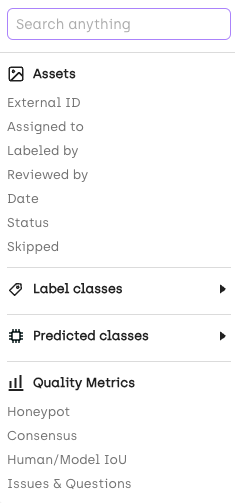
All available filters
Additionally, after you select a class, you can select No value to find all the mandatory labeling jobs with no input from labelers. Note that this type of filtering does not work with transcription jobs.
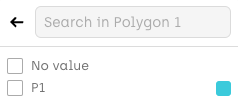
Filtering by mandatory jobs with no value
Here's an example of how you can filter assets in Kili.
Let's say that you want to find all assets that John Doe labeled as "Sports car" or "Limousine". You only want to see John's labels that were not reviewed yet and only the ones where issues were raised.
This is your starting point:
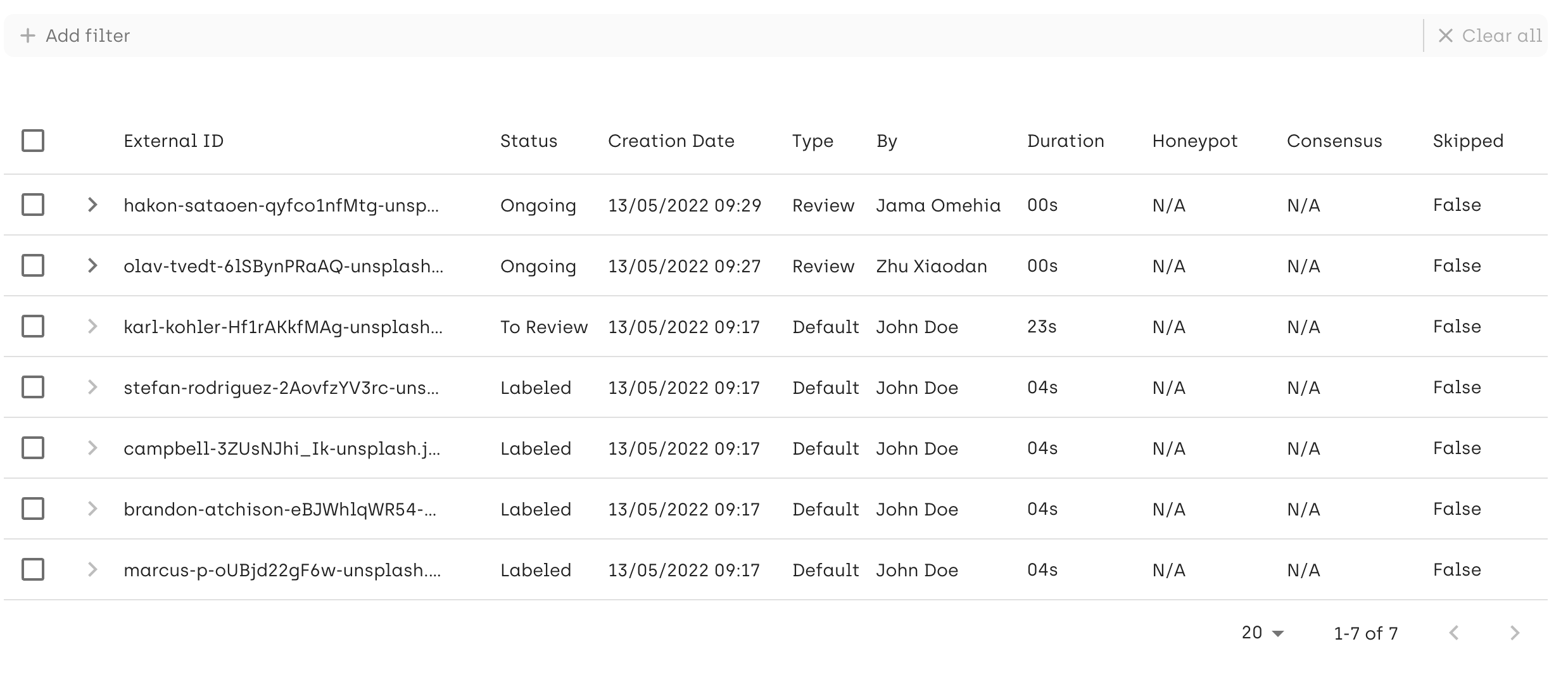
First, you need to select John from the Labeled by list:
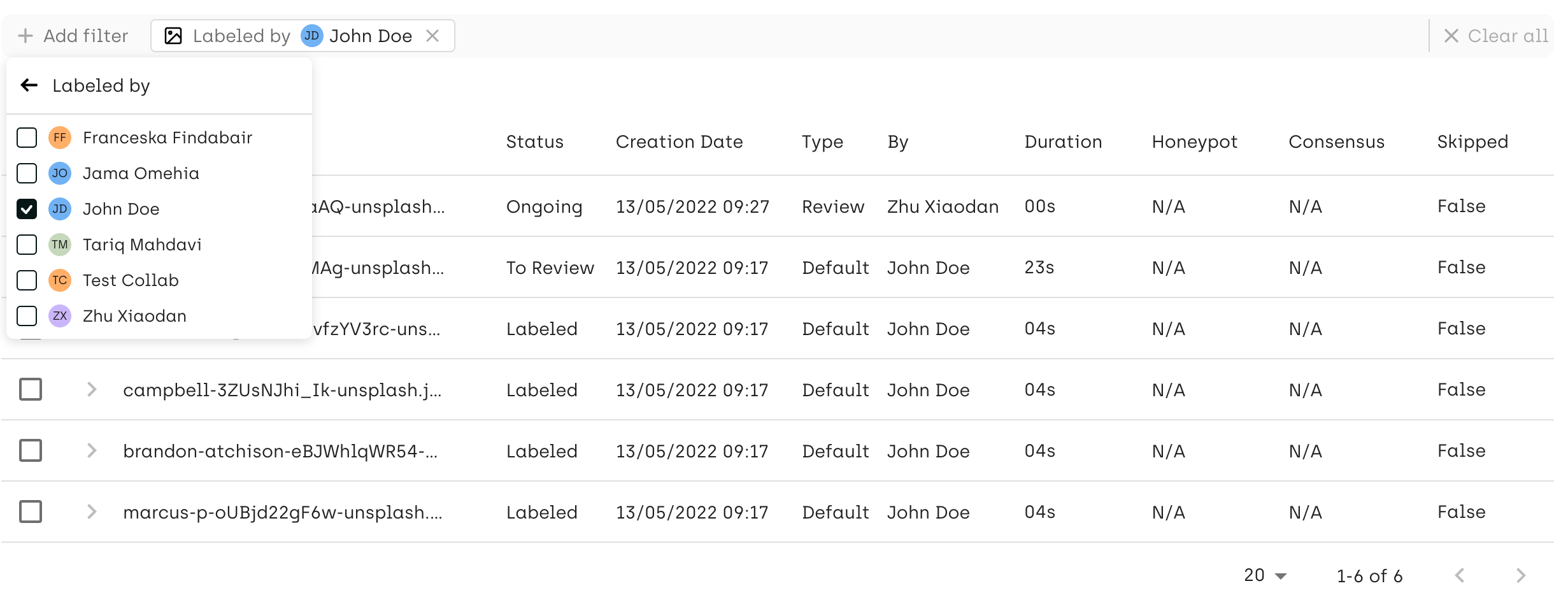
Then click Add filter again and from the Status list select To review and Labeled (you're not sure if the asset has already been moved to the "to review" state, so you need to select both).
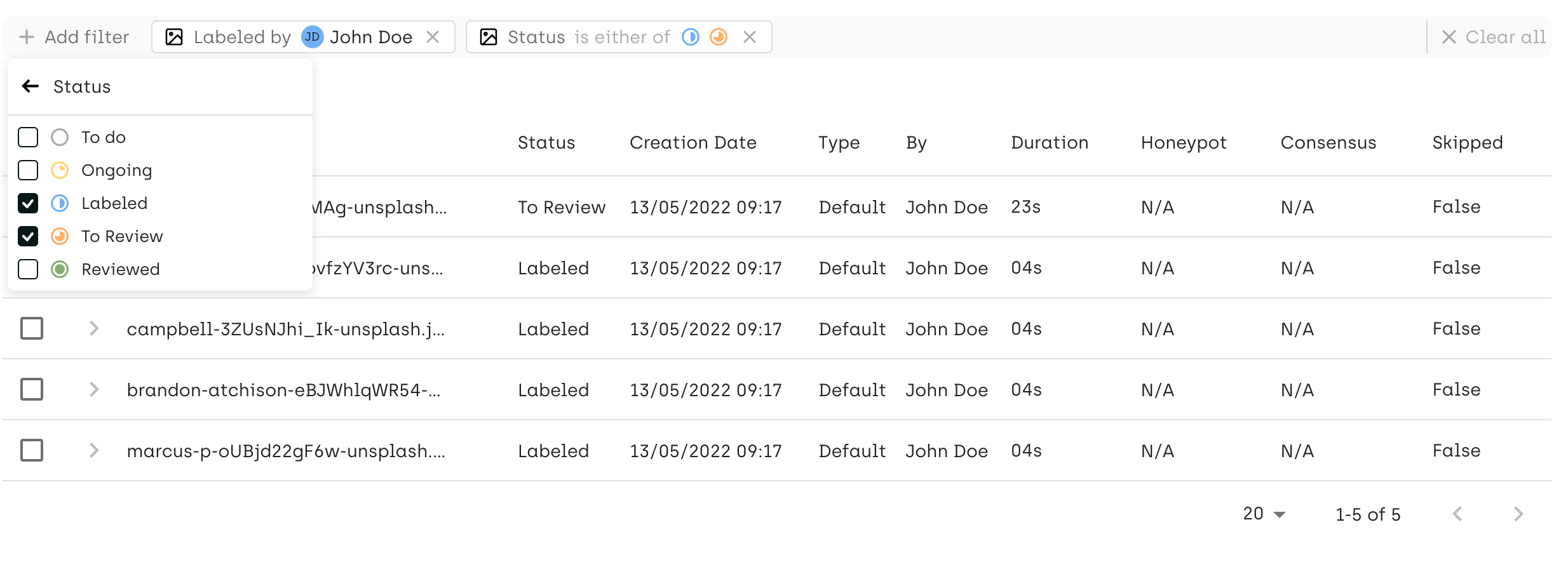
You want to narrow down your search to only two label categories: "Sports car" and "Limousine". Click Add filter again, select Choose a matching category and then select Sports car and Limousine.
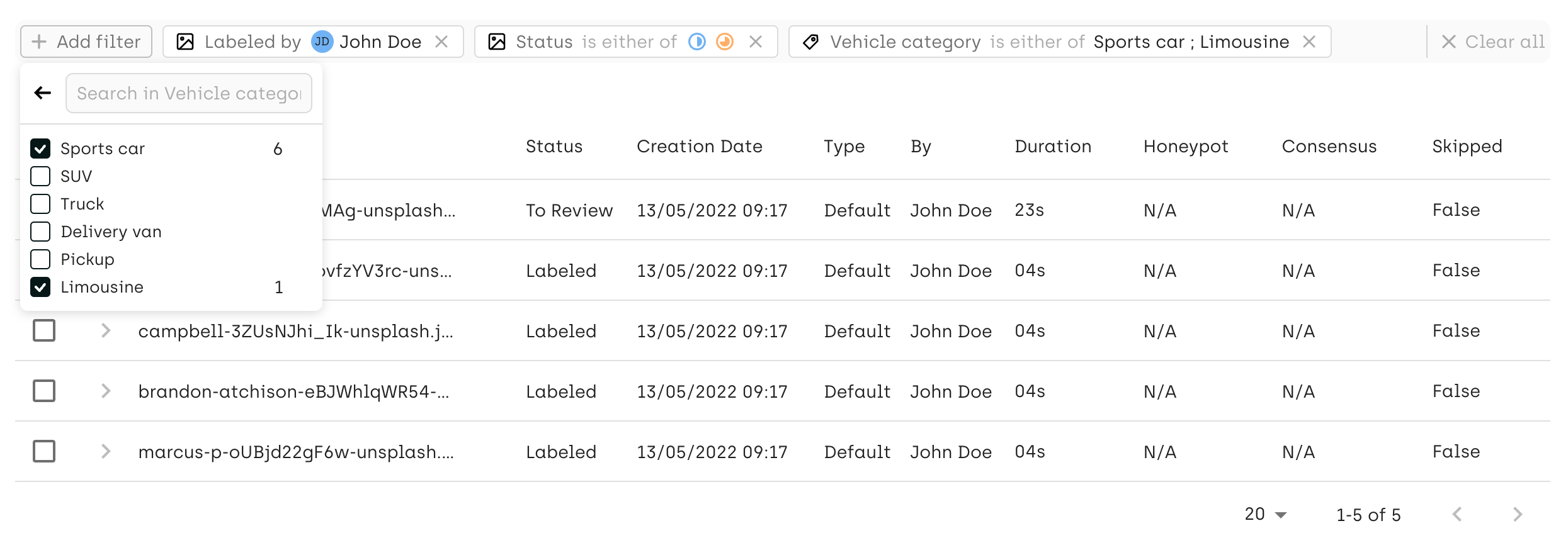
Finally, once again click Add filter and from the Issues & Questions list select Open issues.

Congratulations! You found the exact asset that you were looking for:

If you have many label categories in your project, you can use the search bar to find the ones you're looking for. Refer to this example video showing a search for a specific category, a specific class, and finally for a specific user:
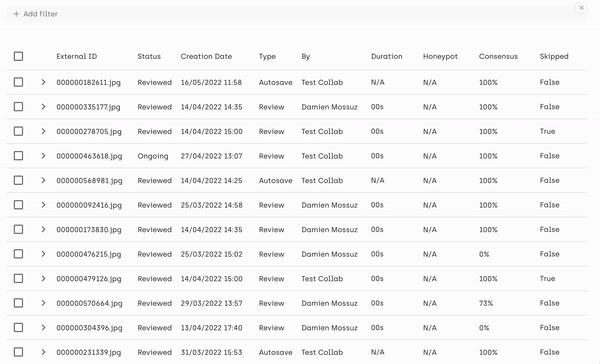
Asset metadata can be a powerful tool to use when filtering assets. For more information on how to add metadata to your assets, refer to Adding asset metadata.
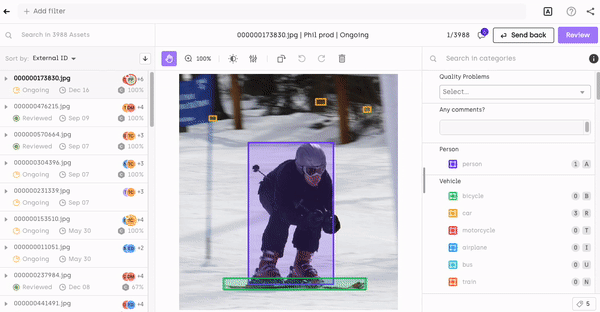
Filtering by asset metadata
Learn more
Updated about 2 months ago